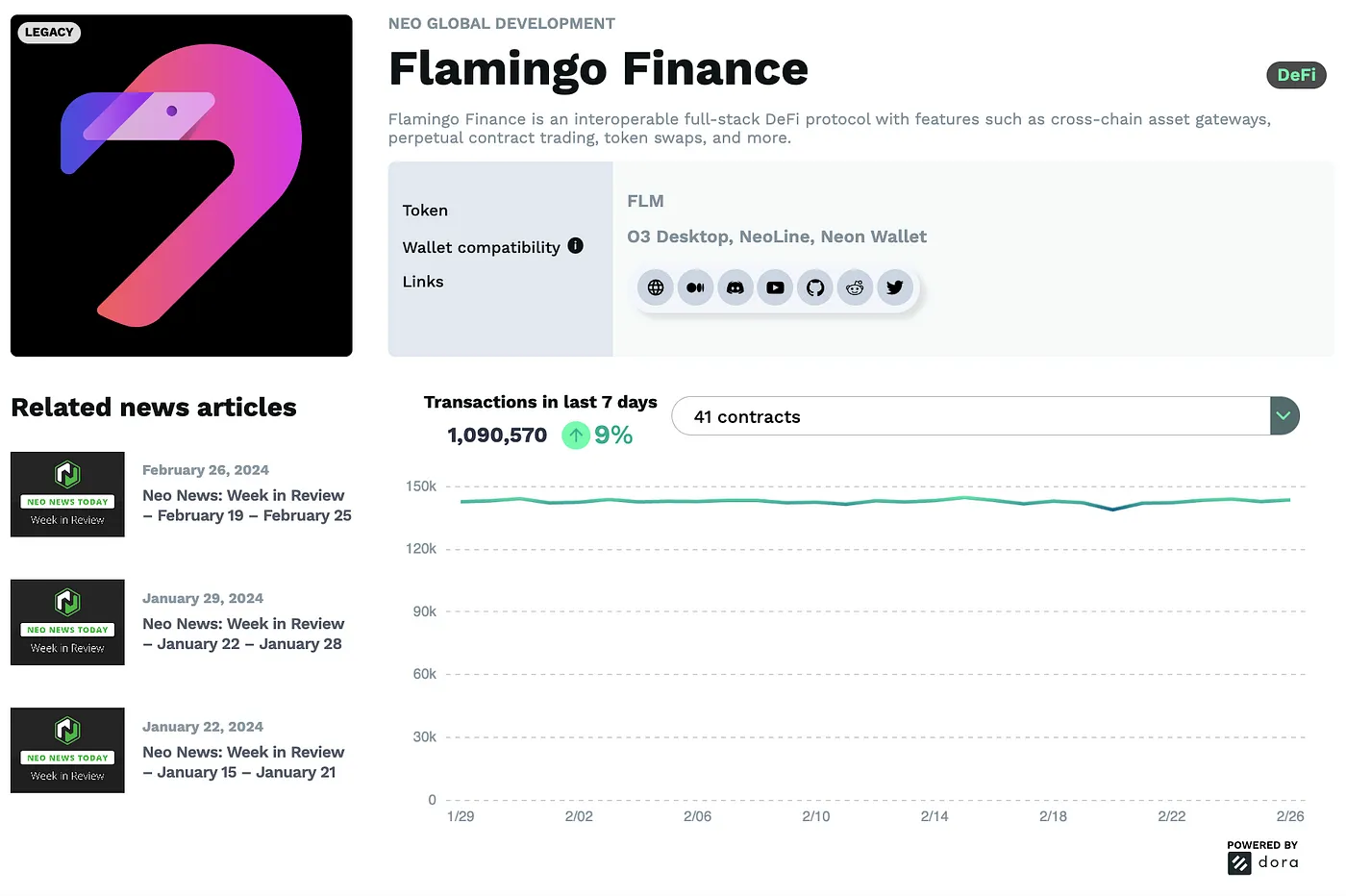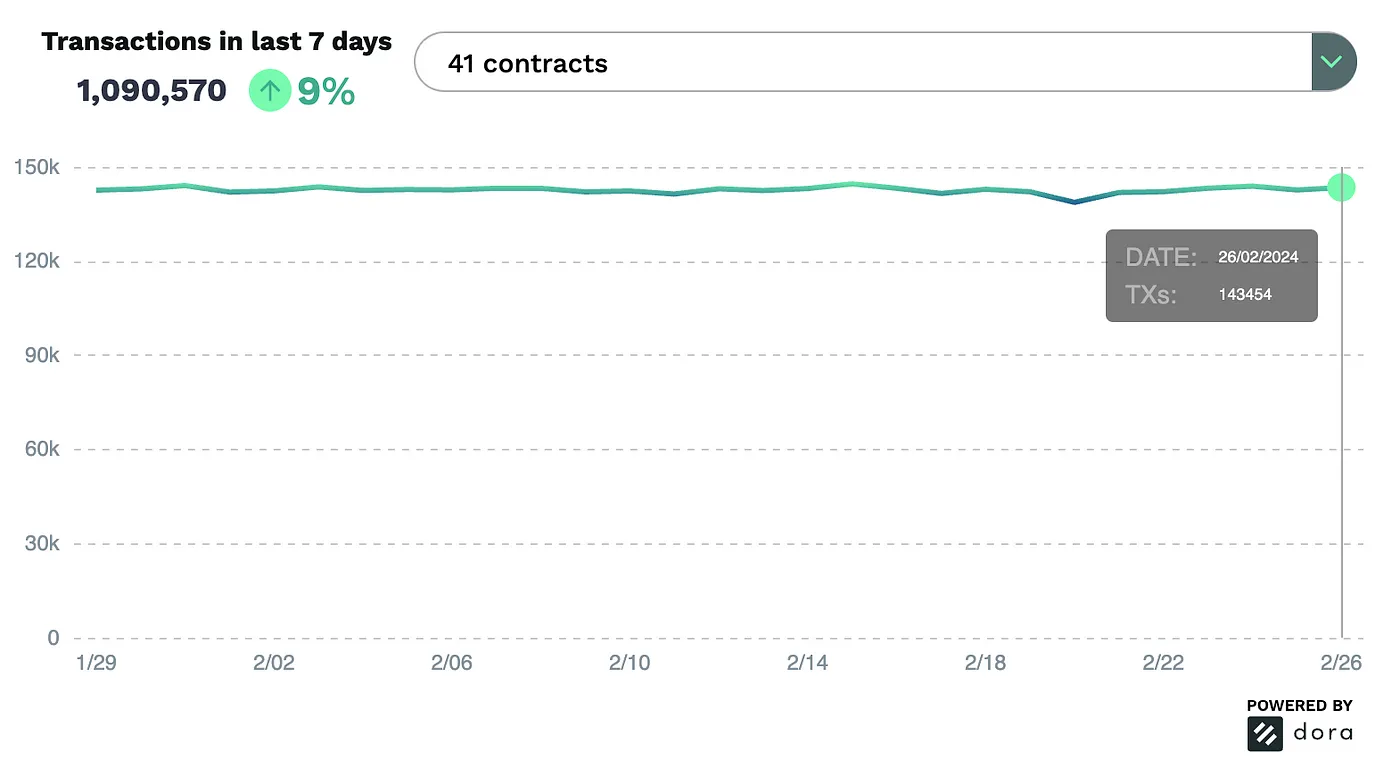Why is Neo Legacy More Active Than Neo N3?
Many may not know that Neo Legacy handles 50x more transactions than the N3 network. The crypto-economics of Neo Legacy is likely the cause for this.
What’s Neo Legacy?
Neo Legacy is a ‘deprecated’ $NEO blockchain network. Neo has gone through some updates over the years. One of them was the N3 upgrade, which changed the overall structure of the blockchain and demanded tokens to be migrated to a new network.
There were major changes on N3:
- UTXO was replaced with the Account Model
- Simplified Transactions with Native Contracts
- No more free transactions
Neo Legacy UTXO
For those not aware, UTXO is how BTC handles payments and balances. In short, instead of saving the user balance on the ledger, users must store the transactions they received but did not spend. That’s why it’s called “unspent transaction output”.
UTXO made the platform harder to use, especially for developers. Under the hood, applications had to depend on external services, like Neoscan, to obtain their balances. This differs significantly from the account model, where all the information is stored on the blockchain ledger.
Using UTXO also demanded the network to use different types of transactions. Transactions that send tokens are called “Contract” transactions, while others that invoke smart contracts are described as “Invocation” transactions.
Open any Neo Legacy explorer, like Neo Tube, and you will notice that most of the existing transactions are of the “Invocation” type, with a few “Miner” and “Contract” transactions appearing now and then.
Miner transactions are the first transactions included in every block. It was used to distribute $GAS. However, generation has been disabled on Neo Legacy. You need to use the N3 network to generate new GAS.
Simplified Transactions with Native Contracts
On Neo N3, there aren’t different types of transactions. All the transactions follow the same structure, and to compensate for the flexibility of various types, Neo introduced the concept of Native Contracts.
These contracts manage the network and are part of the protocol. $NEO and $GAS are native contracts. Deploying smart contracts uses the native ContractManagement smart contract. This change made the platform more consistent, making the native tokens fully compatible with the existing platform token standard, NEP-17.
No More Free Transactions
Neo Legacy offers free transactions if their cost is below 10 GAS. At first, this looked like a positive feature, but it turns out that it’s not.
The most important invention made by the Bitcoin creators was the crypto-economy. This is based on game theory and defines rules to create a sustainable ecosystem. A large part of it is related to the fees consumed by the network and paid to miners.
By making transactions free, Neo Legacy created a poor economic system. Spammers eventually abused it, and currently, despite offering free transactions, it’s impossible to use it without paying a fee. This is because the network is full of ‘spam’ transactions that fill all the free space in the blocks.
Learning from this, Neo eliminated free transactions during the N3 network upgrade. This eliminated spam but also had a significant impact on network transactions.
Comparing numbers from Neo Legacy with Neo N3
Daily Transactions
According to explorers, Neo N3 has around 3.140 transactions over the last day. In comparison, Neo Legacy has over 148.000 transactions. Only 2.1% of the transactions happen on the new network.
The total number of transactions on Neo N3 is slightly superior to the number of blocks. Currently, N3 has confirmed around 4,968,007 blocks. During the same period, it accounted for a total of 4,995,071 transactions. That’s an average of just one transaction per block.

On the other hand, Neo Legacy has a total of 12,334,682 confirmed blocks and a total of 257,862,463 transactions, averaging 21 transactions per block.

Flamingo Legacy Transactions
Flamingo is the largest DEX on $NEO. It was launched on Neo Legacy and continues to be the most important DeFi platform on Neo. It’s responsible for almost all recent transactions on Neo Legacy.
According to Neo Tube, Neo Legacy had around 148.000 transactions per day. Looking at NDapp, we can see that around 143.500 were Flamingo Legacy invocations. That means that around 97.5% of all transactions made on Neo Legacy use Flamingo Legacy.


We barely see any variation in the numbers. We can assume that this happens because most of these transactions are run by bots, taking advantage of the free transactions. Since there aren’t fees, any small price difference may be an arbitrage opportunity.
The Impact of Fees
Economic activity is highly influenced by its execution costs. Neo Legacy was able to leverage an extremely high amount of transactions by using free transactions. At the same time, this approach also made the network a victim of ‘spam’ transactions.
On N3, fees may have become too high, hindering network adoption.
Neo Legacy $GAS and Fees
The N3 upgrade changed how $GAS is generated and consumed. Previously, GAS was generated in every block and distributed to all holders, gradually reducing rewards per block. It had a maximum cap of one hundred million.
Fees are charged if you use over 10 GAS in a single transaction or wish to increase its priority. Since Neo Legacy blocks are constantly full, using a priority fee in this network is often recommended to wallet users. This means that despite Neo Legacy having free transactions, ordinary users must pay fees to be able to send transactions.
Neo N3 $GAS and Fees
On N3, the maximum supply of $GAS was removed. The current $GAS supply is 67 million, increasing constantly at 5 GAS per block.
Mandatory fees were introduced, removing free transactions completely. It continues using two types of fees: system and network fees. The system fees, used to pay for network expenses, are burned. This helps $NEO to balance $GAS inflation.
N3 also burns the fees for purchasing names on the Neo Naming Service, NNS.
Are Neo N3 Fees High?
The fees charged by N3 may be considered high or low depending on the network it’s compared with. Currently, a simple transaction costs around $0.33.
Neo transactions are cheaper if you compare them with Bitcoin or Ethereum transactions. Compared to Solana, Neo is much more expensive. Low transaction fees can be seen as one of the reasons why $SOL is so successful and has seen increased adoption over the last few years.
Could fees be reduced?
Fees on N3 can be reduced if the network validators vote for this change. The fees can’t be reduced to any value. A current limitation in the software prevents fees from being less than ‘1’. Even with the minimum value, the price for a transaction may be over $0.10.
There is currently one issue on GitHub to discuss lowering this limit.
Reducing N3 Fees
Reducing fees will affect network inflation. However, the current burn rate is around 0.1–0.2 GAS per block. Even if the fees are completely removed, the impact would be just 2–4% of the current 5 GAS generated per block.
Reducing fees will have a minimal impact on inflation and may lead to increased network activity.
Participate in the discussions if you wish to see transaction prices reduced.
The Conclusion
Comparing the activity on different networks, we can conclude that lower fees significantly impact network usage. At the same time, eliminating transaction fees isn’t possible.
If Neo desires to increase the number of users in the network, they must work to reduce the network fees. Combine low fees with a good developer experience, and Neo may be able to stand out across the crypto ecosystem. Otherwise, it will continue to have the largest part of its transactions made by bots using Flamingo Legacy.
